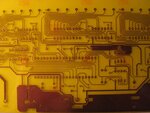ali8
Member level 2
Hello,
We know that for DIY projects, we laser-print the PCB layout on special paper, stick it on the PCB, iron it, and then itch it.
This seems like not very accurate method for professional use. What machine(s) is(are) used for the above steps for medium quantity manufacturing (~100 PCBs per day) ?
Regards
We know that for DIY projects, we laser-print the PCB layout on special paper, stick it on the PCB, iron it, and then itch it.
This seems like not very accurate method for professional use. What machine(s) is(are) used for the above steps for medium quantity manufacturing (~100 PCBs per day) ?
Regards

